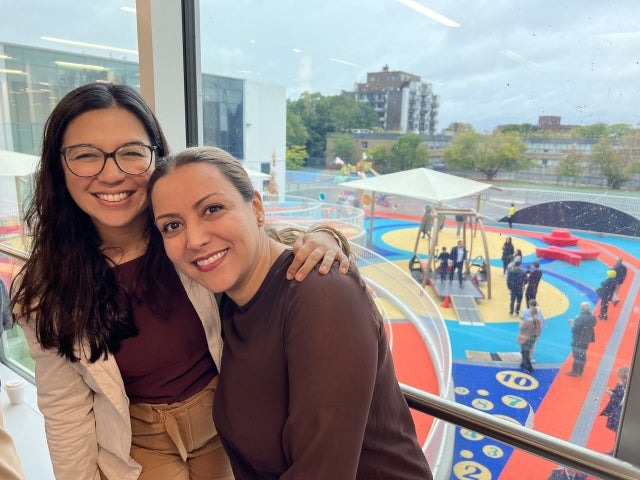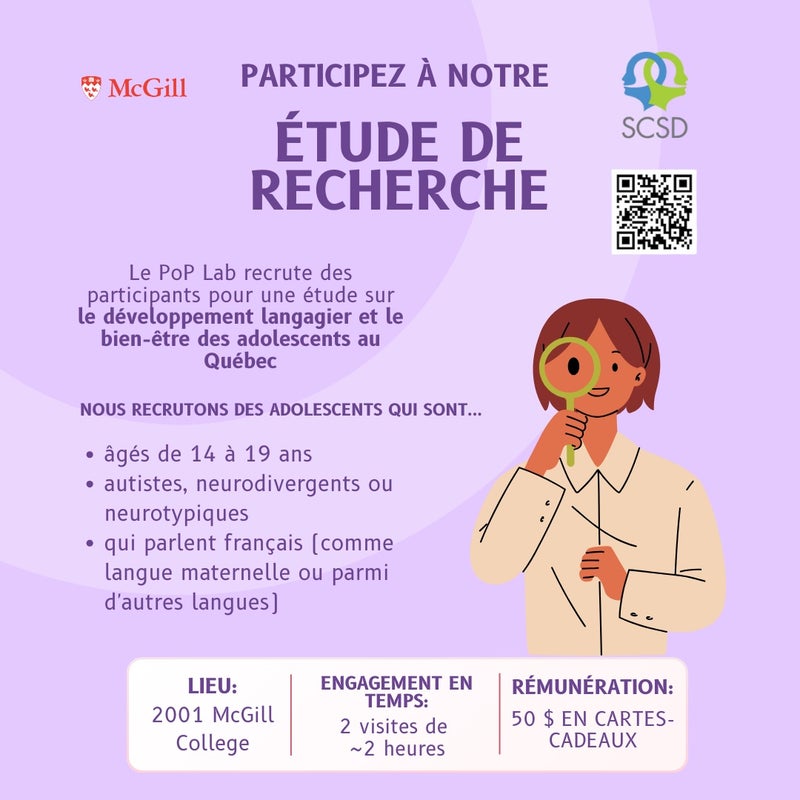New playground unveiled at Mackay Centre and Philip E. Layton schools

By Olivia Intaglia
On September 25, Mackay Centre and Philip E. Layton schools held an inauguration for its first-ever inclusive playground.
The project has been in the works since December 2016, according to Mehrnoosh Movahed and Keiko Shikako, the two lead researchers assigned to the task of helping design the playground.
Movahed is a medical resident at the University of Ottawa and previously a research associate at the Participation-Knowledge Translation in Childhood Disability Lab at McGill University, and Shikako is an associate professor with McGill’s School of Physical and Occupational Therapy, and Canada Research Chair in Childhood Disability: Participation and Knowledge Translation.
The process of designing such a playground is lengthy. “We did a massive review of both the research and the guidelines, policies, frameworks – anything that existed about inclusive playgrounds,” explained Shikako.
Movahed and Shikako then created a questionnaire booklet for students, parents, staff and experts to provide their input on the playground’s design.
The outcome includes several unique features. The playground has a non-static slide, various sensory elements, a music area and a wheelchair accessible swing and merry-go-round. Several of the structures can accommodate ambulatory and non-ambulatory children together.
The non-static slide was included to allow children who are deaf or hard of hearing to play on a slide that does not produce static, something that would normally interfere with the electronic components of cochlear implants, explained Movahed.
Every detail was carefully thought out to ensure it was an inclusive space. Movahed described how the playground has sensory tiles allowing children using canes to easily navigate the space. Shikako eagerly added that the contrasted colours chosen for the playground floor were also considered to accommodate students with visual impairments.
Moreover, the playground was designed to ensure that wheelchair users and ambulatory children can play together.
“The ramps are double-sided, so you could have a child in [one] wheelchair and two children in wheelchairs going in different directions, but you could also have ambulatory children and adults going with them,” said Shikako.
While the playground is now complete, the schools’ vice principal, Bob Simpson, said the next step is to introduce the students to the space.
“The primary concern, as always, is safety,” he said, adding that the school will likely bring students out in a structured format to teach them how to use the equipment.
“There’ll be certain rules and expectations that we will go over with the students [...] either through physical education, with the rehab team, or class-by-class with some supervision.”
The research and design of the inclusive playground, created to meet the diverse needs of all students, was made possible through the funding of the Habilitas Foundation, the Centre for Interdisciplinary Research in Rehabilitation of Greater Montreal and private donors. The $3-million project had the tagline of “Every Child Has the Right to Play.”











